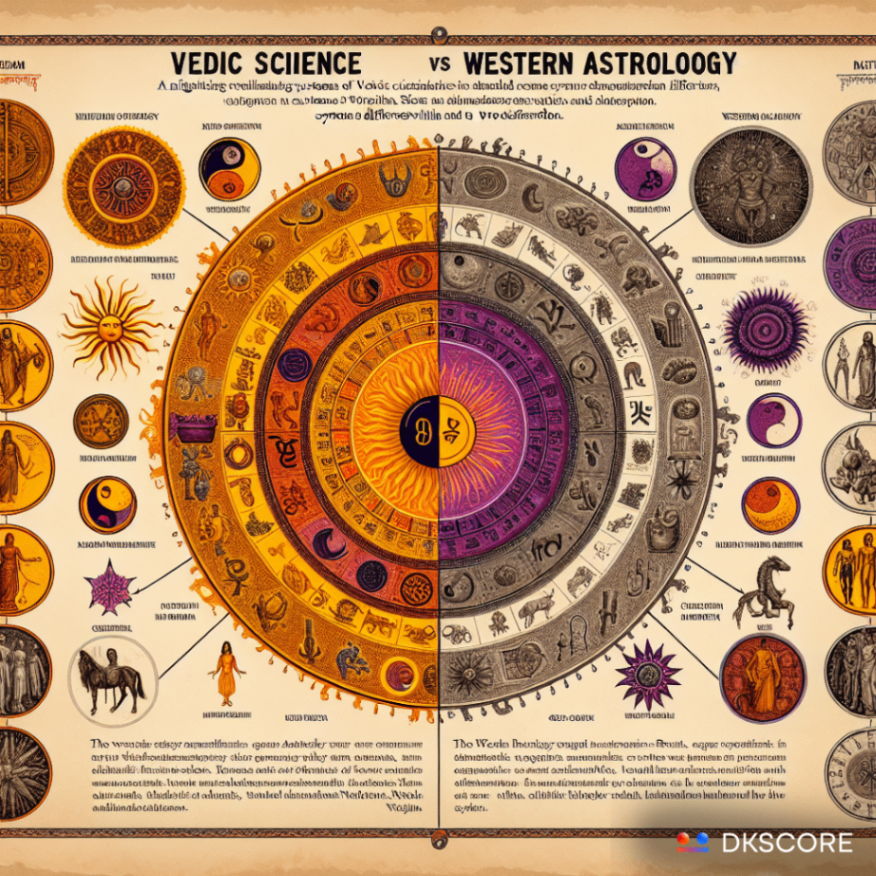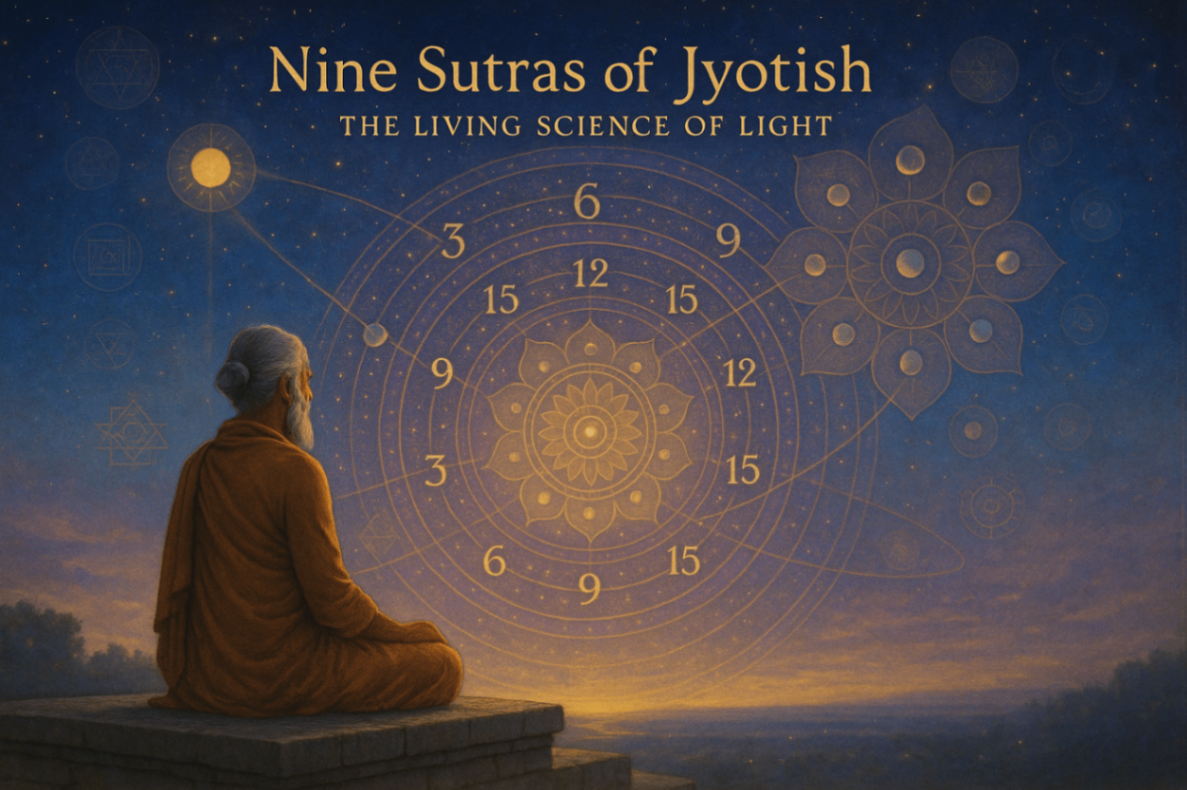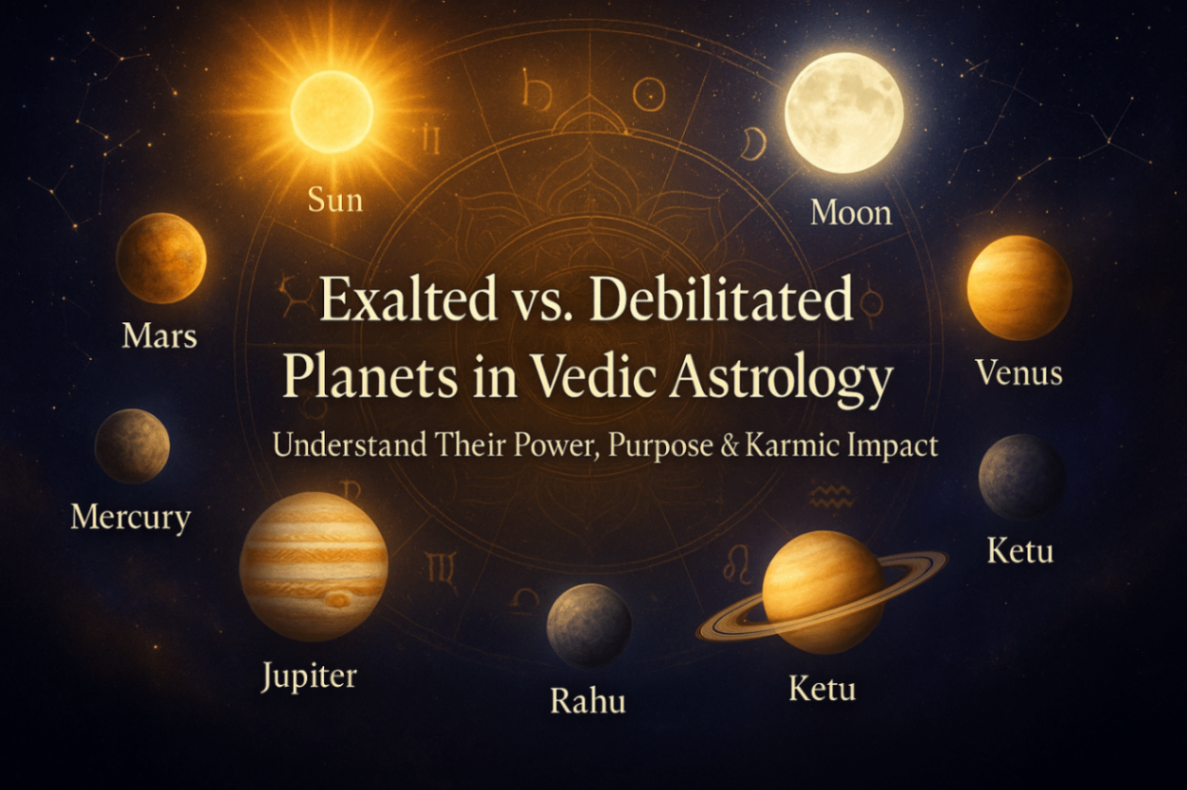Astrology, the study of celestial bodies and their influence on human life, has been practiced for millennia. Two of the most prominent astrological systems are Vedic astrology and Western Horoscope . Both have their unique methods, philosophies, and applications. This comprehensive article explores the fundamentals, differences, and insights of Vedic and Western astrology.

Fundamentals of Vedic Astrology
Origins and Philosophy
The Divine Nature of Vedic Astrology
In Vedic Astrology, the planets and the sky are considered to be a higher nature, the incarnation of Vishnu himself. Divinity is essentially reflected in the sky, and the placements of the planets at the time of our birth are viewed as the fruits of ones karma in this life. This is the fundamental principle of Vedic Astrology. Indian astrological traditions have a profound impact on Vedic astrology.
Historical Roots: Vedic astrology, also known as Jyotish, originates from ancient India and is deeply intertwined with Vedic scriptures dating back over 5,000 years.
Philosophical Basis: It is based on the belief that the positions of celestial bodies can influence human affairs and natural phenomena. Vedic astrology emphasizes karma (the law of cause and effect) and dharma (one’s duty in life).
Zodiac System
The Structure of Vedic Astrology
The space in which planets revolve around the Sun is divided into twelve parts by taking the Sun as the center. These twelve equal parts are known as Rashis or zodiac signs, which are quite commonly used in Western astrology. Furthermore, the twelve Rashis are made up of 27 star groups along the ecliptic, known as Nakshatras or Zodiac constellations. Each constellation has spiritual energies that are emulated in various cultures. The way these energies play out in your chart depends on the planet sitting in that particular Nakshatra.
Sidereal Zodiac: Vedic astrology uses the sidereal zodiac, which is based on the fixed positions of constellations. It accounts for the precession of the equinoxes, a slow shift in the orientation of Earths axis.
The zodiac is divided into 12 signs, each corresponding to a segment of 30 degrees of the ecliptic, with a strong emphasis on the Sun sign. These signs are Aries, Taurus, Gemini, Cancer, Leo, Virgo, Libra, Scorpio, Sagittarius, Capricorn, Aquarius, and Pisces
Nakshatras: The zodiac is divided into 27 Nakshatras or lunar mansions, each with specific attributes and deities, providing deeper insights into an individual’s personality and destiny.
Chart Types
D1 Chart (Rasi Chart): This is the basic birth chart that maps the positions of planets at the time of birth.
Divisional Charts: Vedic astrology employs various divisional charts (Vargas) such as the Navamsa (D9), which provides detailed insights into specific areas of life, including marriage, career, and spirituality.
Planetary Periods (Dashas)
Unique Features of the Vedic System
Another unique feature of the Vedic system, which doesnt exist in the Western system, is the concept of Dasha, which are cycles of time allowing for very precise predictions. There are many Dasha systems in Vedic astrology, but the most commonly used one is called the Vimshottari Dasha system. This system uses a 120-year cycle in which each planet rules a certain number of years, based on the belief that people in the Kali Yuga lived up to 120 years.
The start of the first Vimshottari planetary Dasha cycle is determined based on the Nakshatra or star constellation where the Moon resides in any given birth chart. The planetary ruler of that Moons Nakshatra will determine the first Dasha period. For example, if your birth chart has the Moon sitting in Leo in the first ten degrees, which is ruled by the Nakshatra Magha, then your first Dasha period will be ruled by Ketu. This is because Magha is ruled by Ketu.
Yogas in Vedic Astrology
Another important feature of the Vedic system is the use of Yogas. These are assessed in a chart based on how the planets share their energy, their disposition, and their placements in a birth chart. All these factors are evaluated to see what specific results these Yogas will produce for an individual. The Yogas get activated by the Dasha sequence that youre going through in your life at any given moment.
There are more than 400 Yogas mentioned in the Vedic classics, but their strength and ability to deliver the promised results must be assessed. Even if a Yoga has the potential to give benefits, it might not manifest if you never experience the Dasha sequence of the planet forming the Yoga. Hence, it doesnt get activated and doesnt manifest in your life.
Fundamentals of Western Astrology
Origins and Philosophy
Historical Roots: Western astrology traces its origins to ancient Babylon, Greeks, and Rome. It evolved through the Middle Ages and the Renaissance, influenced by various cultural and philosophical developments.
Philosophical Basis: Western astrology is often more psychological, focusing on the individuals personality and psychological patterns. It is influenced by the works of Carl Jung and other modern psychologists.
Western Zodiac System
Tropical Zodiac: Western astrology uses the tropical zodiac, which is based on the position of the Sun relative to the equinoxes and solstices. It does not account for the precession of the equinoxes.
Sun Signs: The zodiac is like dividing the sky into 12 signs, each corresponding to a segment of 30 degrees of the ecliptic, with a strong emphasis on the Sun sign.
Chart Types
Natal Chart: This is the primary chart used in Western astrology, mapping the positions of planets at the time of birth.
House System: The chart is divided into 12 houses, each representing different areas of life. The placement of planets in these houses provides insights into various life aspects.
Aspects and Transits
Planetary Aspects: Western astrology places significant emphasis on aspects, the angular relationships between planets, which influence how planetary energies interact.
Transits: The movement of planets through the natal chart, known as transits, is used to predict future events and trends.
Key Differences Between Vedic and Western Astrology
Zodiac System
Sidereal vs. Tropical: Vedic astrologys sidereal zodiac aligns with fixed star positions, while Western astrology’s tropical zodiac is aligned with the seasons. This results in a shift of about 24 degrees between the two systems.
Precession of the Equinoxes: Vedic astrology accounts for this astronomical phenomenon, leading to differences in the positions of planets and signs compared to Western astrology.
Sun Signs vs. Moon Signs
Emphasis on Signs: Western astrology places a strong emphasis on the Sun sign, which represents the core personality. Vedic astrology, however, gives more importance to the Moon sign (Rasi), which signifies the mind and emotions.
In contrast to the Western system, which takes the Sun as the pivotal point of the chart, the Vedic system uses the Moon as the main reference point. This is because the Moon represents the mind and emotions. Karma enters the mind as Samskara, based on our past, including past lives. From the Moon, everything grows, beginning in our consciousness and then manifesting into the world, making the Moon very important in a birth chart.
Astrological sign: Understanding your astrological sign is fundamental in both Vedic and Western astrology.
Chart Interpretation
Houses and Aspects: Western astrologys house system and aspects focus on psychological and situational analysis. Vedic astrologys divisional charts and planetary periods offer a more predictive approach, focusing on karma and destiny.
Nakshatras: The use of Nakshatras in Vedic astrology provides a layer of detail not present in Western astrology, offering insights into subtle aspects of personality and fate.
Timing of Events
Dasha System: Vedic astrology’s Dasha system provides a detailed method for predicting life events based on planetary periods. Western astrology relies more on transits and progressions for timing events.
Remedies and Solutions
Remedial Measures: Vedic astrology offers a variety of remedies, including gemstones, mantras, and rituals, to mitigate negative planetary influences. Western astrology typically focuses on psychological insights and self-awareness to address challenges.
Insights and Applications
Personal Growth and Self-Understanding
Western Astrology: Offers valuable insights into personality traits, psychological patterns, and personal growth. It helps individuals understand their strengths, weaknesses, and life purpose.
Vedic Astrology: Provides a comprehensive understanding of ones life path, karma, and dharma. It offers detailed predictions and guidance for making informed decisions.
Career and Finances
Western Astrology: Helps in understanding vocational strengths and potential career paths based on planetary positions and aspects.
Vedic Astrology: Offers precise predictions about career changes, financial gains, and professional success through the analysis of divisional charts and Dashas.
Relationships and Compatibility
Western Astrology: Uses synastry and composite charts to analyze relationship compatibility and dynamics.
Vedic Astrology: Employs techniques such as Guna Milan and the analysis of the Navamsa chart to determine marital compatibility and relationship outcomes.
Health and Well-being
Western Astrology: Provides insights into health issues through the analysis of the 6th house and planetary aspects.
Vedic Astrology: Uses the D1 and D30 charts to identify potential health issues and offers remedies to enhance well-being.
Conclusion
Both Vedic and Western astrology offer unique perspectives and tools for understanding human life and destiny. Vedic astrology, with its focus on karma, dharma, and detailed predictive techniques, provides a profound understanding of ones life path and spiritual journey. Western astrology, with its emphasis on psychological insights and personal growth, offers valuable tools for self-awareness and personal development. By exploring and integrating the insights from both systems, one can gain a holistic understanding of their life and potential.
In both system astrologers predicted significant life events using both Vedic and Western systems. Both systems have roots in astronomy and astrology. Many people check their daily horoscope based on their astrological sign. The positions of planets at the date of birth are crucial in both systems.
Watch the full video





































